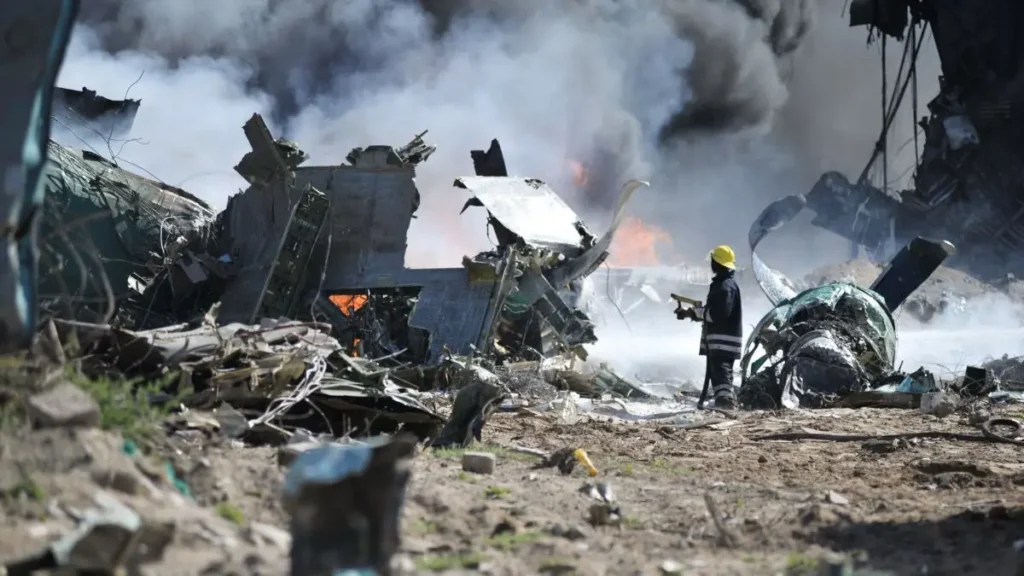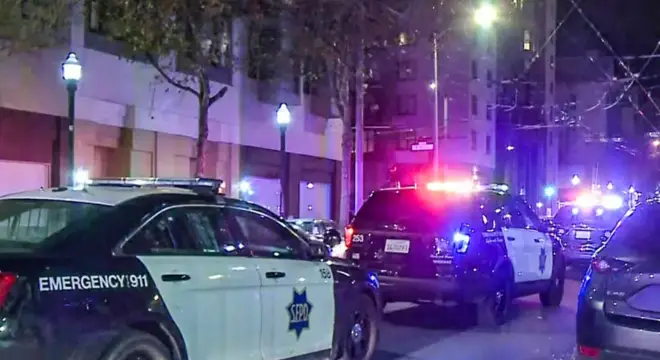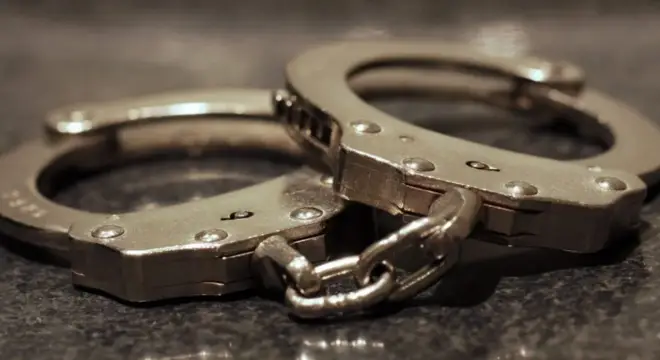North Philadelphia Fire Tears Through Fairhill Rowhome, Total Loss Reported
I’ll be honest with you — anytime a fire breaks out in a tight rowhome block, especially in a neighborhood like Fairhill, my first thought is always the same: I hope everyone got out in time. Thankfully, this time, they did.
Just before midnight on Sunday, firefighters rushed to a home on the 3000 block of North 4th Street after flames broke out inside. If you know this part of North Philadelphia, you know how close these rowhomes sit, wall-to-wall, with barely any breathing room. A fire in one house can turn into a block-wide disaster in minutes.
That’s why the biggest relief — for me and probably for you too — is that officials confirmed there were zero injuries. Not a single resident, neighbor, or firefighter hurt. And that’s not luck; that’s fast response.
Crews managed to get the fire under control in about 20 minutes, which is impressive for an overnight call. Think about it: late hours, narrow streets, older homes — yet they stopped it before it spread and turned into something far worse.
As updates come in, what matters right now is that everyone made it out safely. And if you live in North Philly or in any rowhome community, this incident hits close to home — because it easily could’ve been your block or mine.
Timeline of the Fire — What Happened on North 4th Street?

If you read the initial NBC Philadelphia report, you probably noticed how quickly everything unfolded. Their early update said firefighters got the call just before midnight, and honestly, those late-night fires always worry me the most. People are asleep, alarms get ignored, and minutes matter.
Here’s how things played out:
The fire sparked inside the rowhome sometime before 12 AM on Sunday. By the time crews reached the 3000 block of North 4th Street, the flames were already pushing out fast enough to wake neighbors. Overnight responses are tough — darker streets, slower visibility, and older homes that never make it easy — but the crews went straight to work.
And within roughly 20 minutes, they had the fire under control. Twenty minutes. If you’ve ever seen a rowhome fire spread, you know that number is the difference between “a single-home incident” and “half the block gone.”
What stood out to me was the pace: no delays, no confusion, no extended chase. NBC’s report highlighted the speed, and I agree — that detail matters more than people realize.
Why Fairhill Rowhomes Face Higher Fire Risks
If you live anywhere in North Philly, you already know this: our rowhomes are both our strength and our weakness. They create real community, but they also leave zero margin for error during a fire.
Fairhill is full of older, tightly packed properties — many built long before modern electrical standards or fire-safety codes. You and I can stand on the sidewalk here and literally touch two homes at once. That closeness is great for neighborly life, but it’s also exactly why a single fire can turn into a multi-home disaster within minutes.
Another thing people forget: older rowhomes have hidden risks. Aging wiring behind plaster walls. Shared attics. Old chimneys. Small kitchens stacked with everyday appliances. None of this is “bad,” but it’s the reality of living in a neighborhood built long before today’s safety requirements.
So when a fire breaks out in Fairhill — even a small one — it’s never “just another house fire.” The entire block is at risk from the moment those flames start moving.
Cause of the Fire — What Officials Are Saying So Far
Right now, officials haven’t shared what sparked this fire — and that’s normal. Overnight calls rarely come with instant answers. Investigators need daylight, access, and time to figure out what really happened.
When I hear “cause under investigation,” I don’t jump to conclusions. I’ve seen too many fires blamed on rumors that had nothing to do with the truth. Sometimes it’s faulty wiring. Sometimes it’s a heater pulled too close to fabric. Sometimes it’s something as simple as food left on the stove.
Until the fire marshal releases the official details, all you and I can do is watch the updates and stay grounded in what’s confirmed. No injuries. Contained quickly. Cause unknown — for now.
And honestly, that “unknown” is a reminder of how suddenly these things can start, even when you think your home is safe.
No Injuries Reported — Why That Matters More Than Anything

This is the part that hits me the hardest — nobody was hurt.
When you cover or follow enough fires in neighborhoods like ours, you know how rare that is. Nighttime fires can go bad in seconds. People sleep through alarms. Kids get trapped. Smoke takes over faster than flames ever do.
So when officials said in their morning update that no residents or firefighters were injured, I felt the same relief most people in Fairhill probably did. Because the damage to a home, as painful as it is, can be fixed. Losing someone cannot.
Quick response + fast containment = lives saved. It’s as simple as that.
In other parts of the country, similar overnight fires have led to tragic outcomes — like the one in NYC where a 95-year-old woman died and two others were critically hurt.
Firefighters’ Rapid Response — 20 Minutes That Changed Everything
Let me tell you something I’ve learned after following North Philly fires for years: a 20-minute containment on a rowhome blaze is not “average.” It’s exceptional.
Think about the conditions they were dealing with — midnight call, dense housing, old structures, narrow streets, limited visibility. Yet the crews showed up, assessed the scene, attacked the flames, and stopped it cold before it could jump to the next home.
This is exactly why I always say the Philadelphia Fire Department doesn’t get enough credit. Their speed didn’t just protect property; it protected families sleeping barely a wall away.
If you live in a rowhome, you know how little space exists between you and your neighbor. Those 20 minutes were the difference between one home damaged and multiple families displaced.
And honestly, if you’re reading this from anywhere in North Philly, it’s a moment worth appreciating — because their response is the reason the story didn’t get worse.
How the Fairhill Community Reacted Overnight?
If you’ve lived in North Philly long enough, you know how quickly people pour out onto the sidewalk when something like this happens. Even at midnight, Fairhill doesn’t sleep the way other neighborhoods do. Folks look out for each other — and when flames light up the block, everyone feels it.
Neighbors stood outside watching the smoke rise, checking on each other, checking on the firefighters, and calling family members who were still inside homes nearby. You can picture it: phones out, people yelling “Is everyone okay?” across the street, someone running to knock on the next-door home just in case the alarm didn’t go off.
And honestly, that’s one of the things I respect most about communities like Fairhill. People don’t wait for official instructions. They move. They react. They stay present until they know their neighbors are safe.
Even though the fire didn’t spread, the tension was real. Anytime flames hit a rowhome block, every household feels that gut punch — because you know it could’ve been your walls catching next.
Blocks like Fairhill move fast during emergencies, and staying connected genuinely helps. Many neighborhoods rely on quick local updates through WhatsApp alert channels — it’s one of the easiest ways to stay aware when something happens near you.
What North Philadelphia Homeowners Can Learn From This Fire?
Whenever I cover an incident like this, I think about the same question: What would help someone prevent the next one? And if you live in a rowhome — Fairhill, Kensington, Hunting Park, Point Breeze — these are the basics you can’t afford to ignore.
- Check your smoke alarms. Actually press the button. Don’t assume. Don’t wait until “next weekend.”
- Look at your wiring. Old outlets, buzzing switches, overloaded strips — these are quiet fire starters, especially in older homes.
- Be careful with heaters. Space heaters feel harmless until they tip or touch fabric. Keep them at least three feet away from anything that burns.
- Clear your exits. Rowhomes are narrow. If your hallway is cluttered, you’re reducing your escape time.
- Talk to your neighbors. Fire spreads sideways in rowhomes, not just upward. If your house is safe but theirs isn’t, you’re still at risk.
These aren’t fancy tips. They’re the things people overlook because they feel too simple. But simple is exactly what saves lives when fires start at midnight with everyone asleep.
And if you’ve ever doubted how unpredictable these fires can be, look at what happened in Burleson — two lives lost before anyone could react.
What Happens Next in the Fire Investigation?
Now that the flames are out and the scene is stable, investigators will go back inside during daylight to figure out what sparked it. That’s when they check wiring, appliances, burn patterns, anything that explains where the fire started and how fast it moved.
The cause isn’t known yet — not even a hint — and honestly, that’s normal this early. Overnight fires rarely come with instant answers.
What you can expect is a follow-up report from the fire marshal in the coming days. If you live nearby or in a similar home, it’s worth keeping an eye on the updates. Knowing the cause isn’t about curiosity — it’s about prevention. Every fire teaches something.
I’ve seen investigations lead to city inspections, code-enforcement reviews, and even block-wide safety checks in areas with older buildings. So this isn’t the end of the story. It’s the halfway mark.
Just last week, a similar overnight blaze in Fairbury followed the same investigation pattern after destroying an entire home. You can see how officials handled it in.
Key Takeaways for North Philadelphia Residents
If you live anywhere in North Philly, especially in neighborhoods filled with older rowhomes, here’s what I’d want you to walk away with:
- One: Fires start fast, and they don’t care what time it is.
- Two: A quick response — like the 20-minute containment here — saves entire blocks.
- Three: Even if the cause is unknown, prevention at home is always in your control.
- Four: Rowhomes demand more awareness because your safety depends on your home and your neighbor’s.
- Five: Community matters — the way Fairhill showed up overnight is exactly how neighborhoods stay safe.
So let me ask you this: If a fire started on your block tonight, would your home be ready?
If you want to stay updated on major home-fire stories and safety insights happening across the U.S., explore more reports in our Home Incidents — it’ll keep you better prepared than you think.
Disclaimer: This article is based on information available at the time of writing and should not be taken as official investigative findings. For verified updates or safety guidance, always refer to the Philadelphia Fire Department or local authorities. If you’re in doubt about your home’s fire safety, consult a licensed professional.


